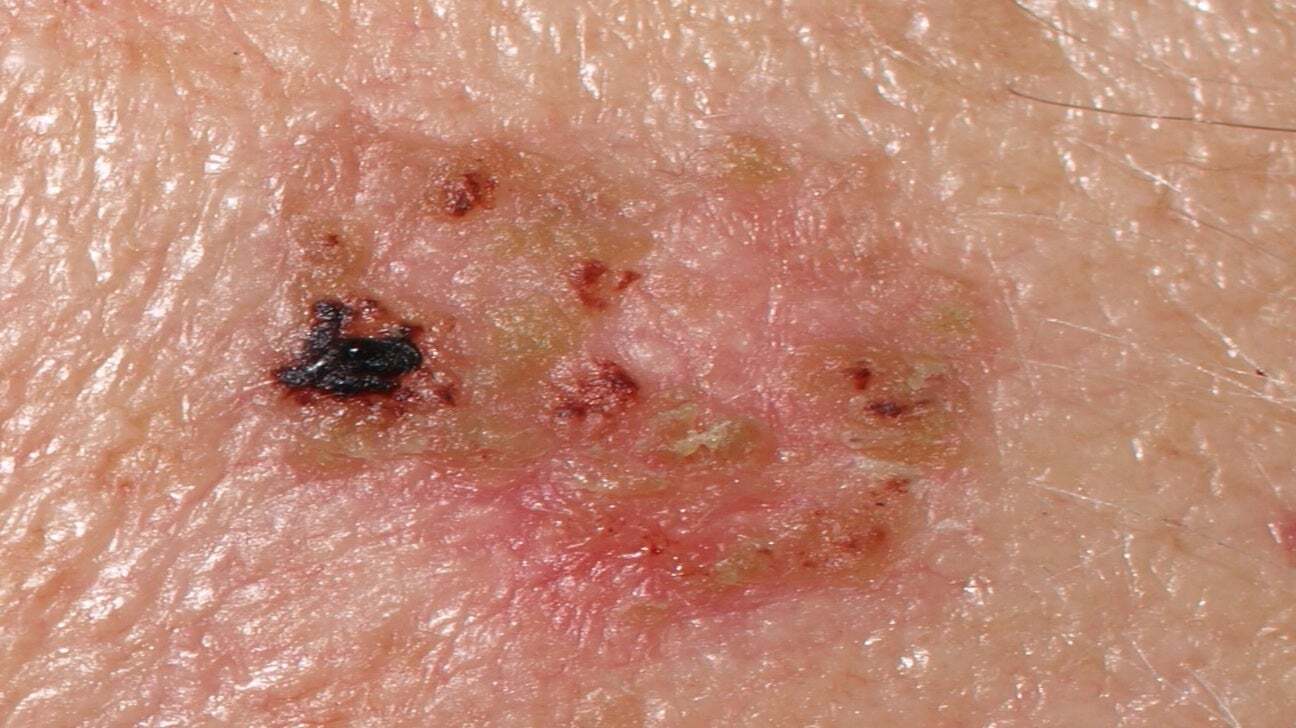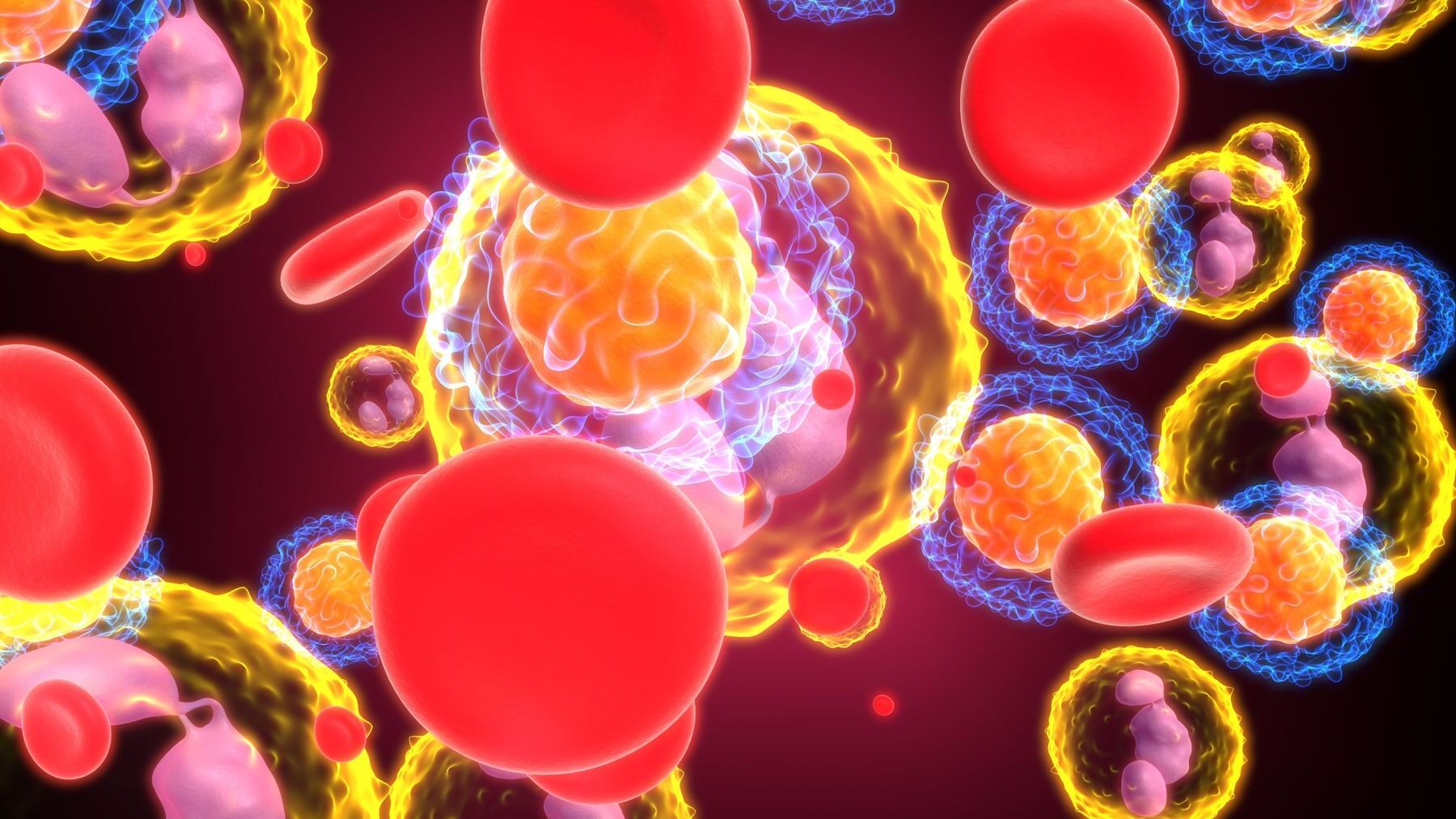
What is Bowen's Disease? Bowen's Disease is a rare skin disorder that appears in the outermost layer of the skin, known as the epidermis. Also called squamous cell carcinoma in situ, it features abnormal cells that can potentially turn into invasive cancer if untreated. This condition often shows up as a slow-growing, reddish-brown patch or plaque of dry, scaly skin. Commonly affecting people over 60, it thrives in sun-exposed areas like the lower extremities, head, and neck. Risk factors include chronic sun exposure, HPV infection, and arsenic exposure. Early detection and treatment are crucial to prevent progression to invasive cancer.
What is Bowen's Disease?
Bowen's disease, also known as squamous cell carcinoma in situ, is a rare skin disorder. It involves abnormal cells in the outermost layer of the skin, the epidermis. These cells have the potential to develop into invasive cancer if left untreated.
-
Definition: Bowen's disease is a type of skin cancer that occurs in the epidermis, the outermost layer of the skin.
-
First Description: The condition was first described by Dr. John T. Bowen in 1912.
-
Synonyms: It is also known as squamous cell carcinoma in situ, indicating its early stage and non-invasive nature.
Who is at Risk?
Certain factors increase the likelihood of developing Bowen's disease. Understanding these can help in early detection and prevention.
-
Incidence: The exact incidence of Bowen's disease in the general population is unknown, but it is more common in Caucasians and individuals over the age of 60.
-
Risk Factors: Chronic sun exposure and aging are major risk factors for developing Bowen's disease. Individuals with fair skin and those who spend a lot of time outdoors are at a higher risk.
-
Immune System: Individuals who take drugs to suppress their immune system are also at a greater risk of developing Bowen's disease.
-
HPV Infection: Infection caused by human papillomavirus (HPV) is a key risk factor for developing Bowen's disease, particularly in the genital area.
-
HPV Types: HPV types 16, 18, 34, and 48 are associated with Bowen's disease, with HPV 16 being the most common type.
-
Arsenic Exposure: Chronic exposure to arsenic can also lead to the development of Bowen's disease, approximately 10 years after initial exposure.
Symptoms and Appearance
Recognizing the symptoms and appearance of Bowen's disease is crucial for early diagnosis and treatment.
-
Symptoms: The primary symptom of Bowen's disease is a slow-growing, persistent reddish-brown patch or plaque of dry, scaly skin. These lesions may be flat or slightly raised and are usually asymptomatic but can occasionally itch, bleed, or become infected.
-
Lesion Appearance: Lesions are typically well-demarcated and can vary in size, often reaching a few centimeters in diameter. They may have an irregular border and can be crusted or eroded.
-
Location: Bowen's disease most commonly affects sun-exposed areas of the skin, such as the lower extremities, head, and neck. However, it can also occur on the soles, palms, genitals, and perianal regions.
-
Multiple Lesions: In about 10-20% of cases, multiple lesions can develop in various parts of the body.
-
Histopathological Variants: There are several histopathological variants of Bowen's disease, including cutaneous erythematous, pigmented, and verrucous types.
Diagnosis and Differential Diagnosis
Diagnosing Bowen's disease accurately is essential for effective treatment. Various methods and considerations are involved in this process.
-
Differential Diagnosis: The differential diagnosis for Bowen's disease includes conditions such as actinic keratosis, basal cell carcinoma, discoid lupus erythematosus, and psoriasis.
-
Clinical Diagnosis: Bowen's disease is often diagnosed clinically, but a dermatoscope may be used to aid in diagnosis. A punch biopsy is required for histological confirmation if there is any doubt.
Treatment Options
There are multiple treatment options available for Bowen's disease. The choice of treatment depends on the size and location of the lesion, as well as the patient's overall health.
-
Treatment Options: Various treatment options are available for Bowen's disease, including cryotherapy, photodynamic therapy (PDT), topical chemotherapy, curettage, and surgery.
-
Treatment Success Rates: Most treatments for Bowen's disease are highly successful, with a high response rate. However, the effectiveness of specific treatments can vary from person to person, and a tailored treatment plan is essential for individual cases.
-
PDT as a Treatment: Photodynamic therapy (PDT) is a valuable treatment option for Bowen's disease, particularly for large lesions. It is better tolerated and produces better cosmesis compared to cryotherapy.
-
Cryotherapy: Cryotherapy involves freezing the affected area and is often used for small lesions. It is a simple and effective method but may not be suitable for larger lesions or those in sensitive areas.
-
Topical Chemotherapy: Topical chemotherapy involves applying medications directly to the affected area. This method is less invasive but may require multiple sessions and careful monitoring.
-
Curettage: Curettage involves scraping off the affected tissue with a curette. This method is often used in combination with other treatments and is particularly effective for lesions that are not easily accessible.
-
Surgery: Surgical removal of the affected area is another treatment option for Bowen's disease. This method is more invasive but provides a definitive cure and is often recommended for larger lesions or those in critical areas.
Prognosis and Prevention
Understanding the prognosis and preventive measures can help manage Bowen's disease effectively and reduce the risk of progression.
-
Prognosis: The prognosis for Bowen's disease is generally excellent, with most treatments showing high success rates. However, if left untreated, there is a small risk (about 3-5%) of the condition progressing to invasive squamous cell carcinoma (SCC).
-
Prevention: Preventive measures include avoiding prolonged sun exposure, using protective clothing and sunscreen, and avoiding immunosuppressive drugs. Regular skin checks can also help in early detection and treatment.
Awareness and Knowledge
Awareness and knowledge about Bowen's disease are crucial for early detection and effective management. However, studies have shown varying levels of awareness among different age groups.
-
Awareness: Knowledge and awareness about Bowen's disease are crucial for early detection and treatment. However, studies have shown that there is no significant difference in awareness among different age groups regarding the disease.
-
Genetic Involvement: There is no significant association between the age group and knowledge of genetic involvement in Bowen's disease.
-
Type of Disease: There is also no significant association between the age group and awareness of the type of disease.
-
Diagnosis Knowledge: The association of age group with knowledge on the diagnosis of Bowen's disease is not significant.
-
Cause Awareness: The association of age group with awareness on the cause of disease is not significant.
Geographic and Demographic Variations
The incidence and presentation of Bowen's disease can vary based on geographic and demographic factors.
-
Incidence in UK: The incidence in the UK is estimated at around 15 per 100,000 per year, based on data from the USA. It is more common in women (70-85% of cases) than in men.
-
Age Group Affected: It most commonly appears between the ages of 60 and 70 years.
-
Location Variations: The variation in body site affected across different countries is not fully understood. For example, it is most commonly found on the lower limbs in the UK, but on the head and neck in Australia, Denmark, and the USA.
-
Subungual and Periungual: It can also occur subungually (under the nail) or periungually (around the nail), affecting the fingers or toes.
-
Genital Area: Occasionally, Bowen's disease can affect the genital area, particularly in individuals with HPV infection.
Historical and Environmental Factors
Historical and environmental factors, such as arsenic exposure, have also been linked to Bowen's disease.
-
HPV and Cancer Link: HPV is a class of viruses that can cause cancer. Some types of HPV are linked to cervical cancer, and others are associated with Bowen's disease.
-
Arsenic Exposure History: Historically, arsenic has contaminated well water and was used in various medical preparations. Chronic exposure to arsenic can lead to Bowen's disease about a decade after initial exposure.
Treatment Effectiveness and Follow-Up Care
The effectiveness of treatments can vary, and regular follow-up care is essential to monitor for any recurrence of the disease.
-
Treatment Variability: The effectiveness of treatments can vary from person to person, and a tailored treatment plan is essential for individual cases.
-
Follow-Up Care: After treatment, regular follow-up care is crucial to monitor for any recurrence of the disease. This includes regular skin checks and potentially additional treatments if necessary.
-
Preventive Measures: Preventive measures include avoiding prolonged sun exposure, using protective clothing and sunscreen, and avoiding immunosuppressive drugs. Regular skin checks can also help in early detection and treatment.
Final Thoughts on Bowen's Disease
Bowen's disease, a type of skin cancer affecting the epidermis, demands attention due to its potential to progress into invasive cancer if untreated. Chronic sun exposure, HPV infection, and arsenic exposure are significant risk factors. Recognizing its symptoms, like persistent reddish-brown patches, is crucial for early detection. Treatments vary from cryotherapy and photodynamic therapy to topical chemotherapy and surgery, each tailored to the lesion's size and location. Regular follow-up care ensures any recurrence is caught early. Preventive measures, such as avoiding prolonged sun exposure and using sunscreen, play a vital role in reducing risk. Understanding Bowen's disease helps in managing and preventing its progression, ensuring better outcomes for those affected. Stay vigilant, protect your skin, and consult a healthcare professional if you notice any suspicious changes.
Was this page helpful?
Our commitment to delivering trustworthy and engaging content is at the heart of what we do. Each fact on our site is contributed by real users like you, bringing a wealth of diverse insights and information. To ensure the highest standards of accuracy and reliability, our dedicated editors meticulously review each submission. This process guarantees that the facts we share are not only fascinating but also credible. Trust in our commitment to quality and authenticity as you explore and learn with us.


